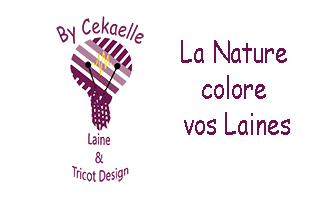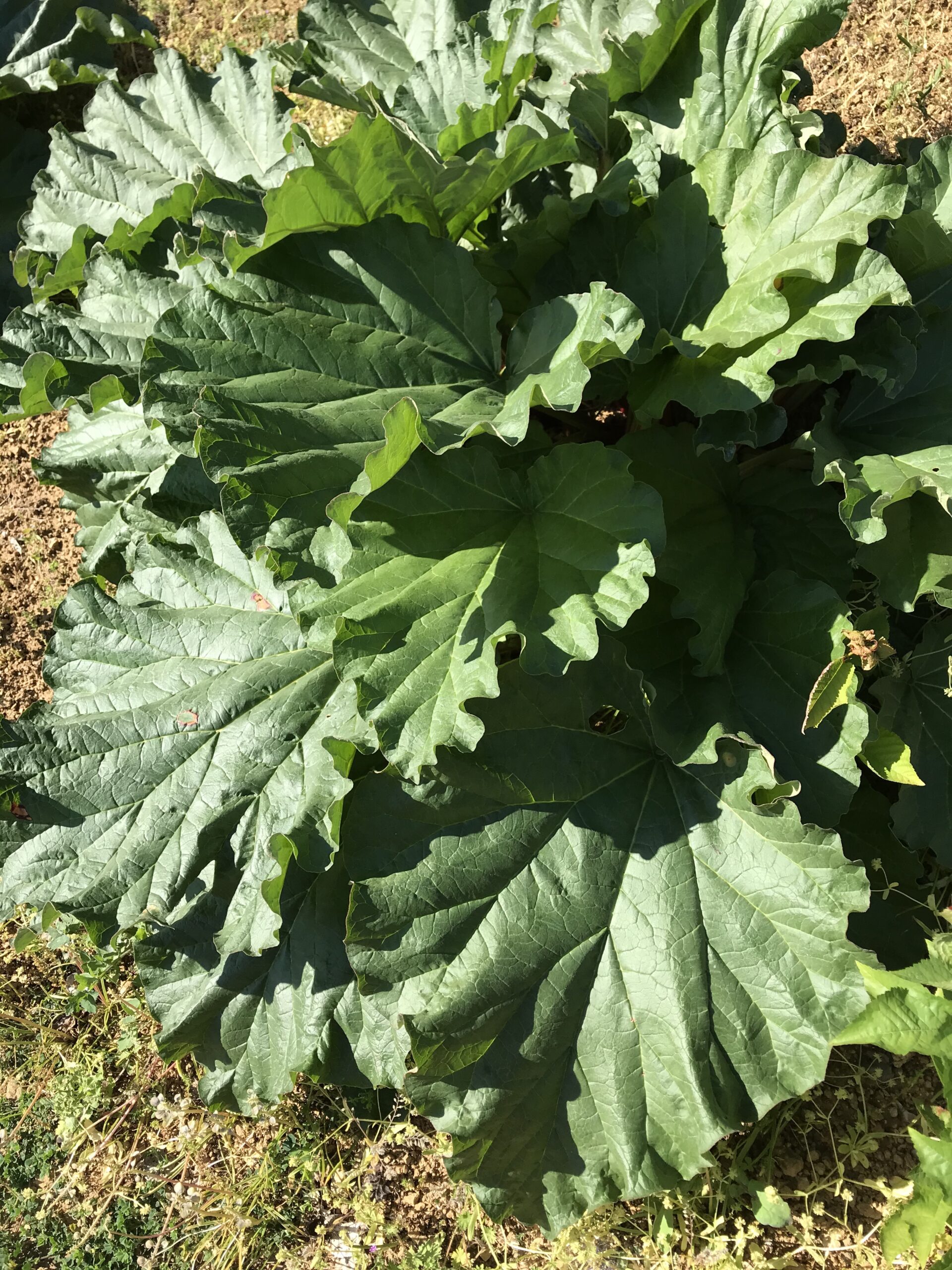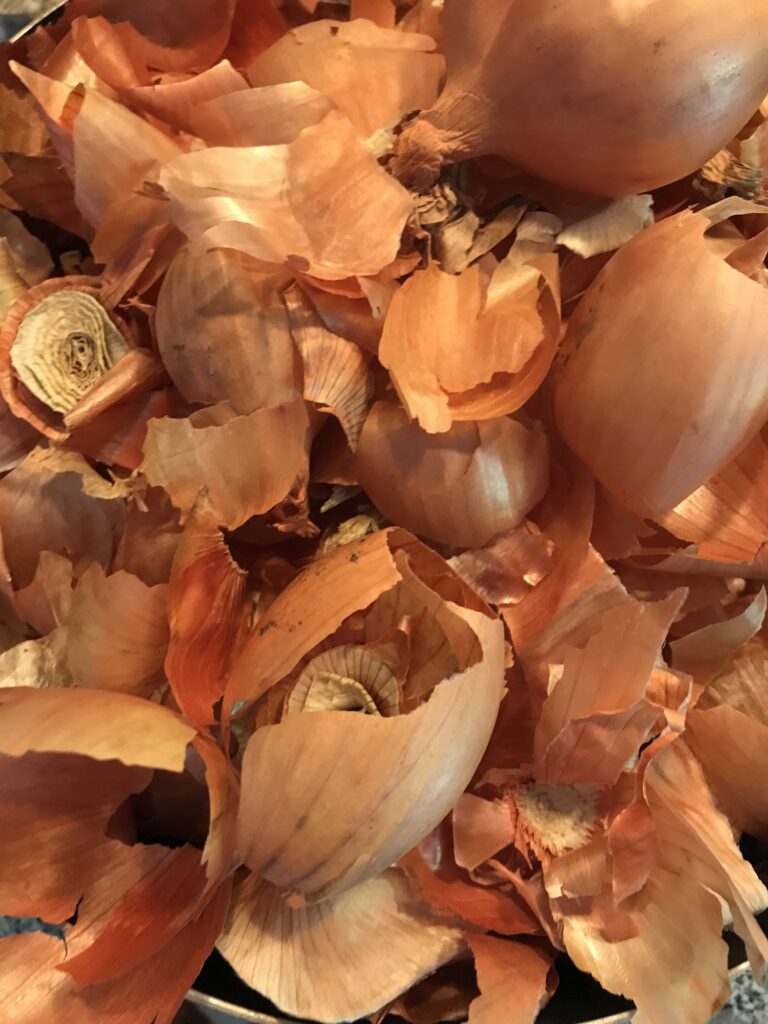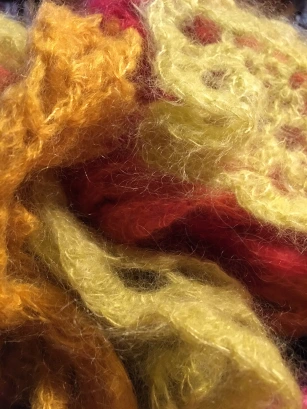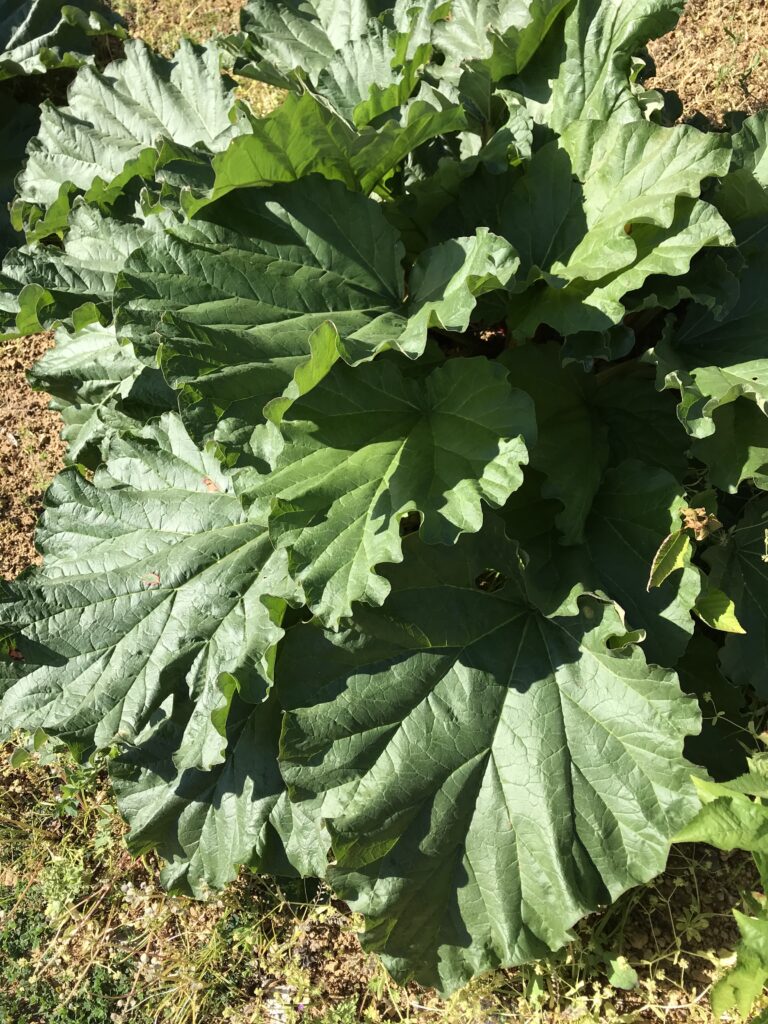
Tincture with Rhubarb leaves
A little botany…
Rhubarb is a herbaceous plant of the genus Rheum and the family Polygonaceae . Only the stem is edible. The leaf is toxic for humans but also for animals. The aerial part of the plant disappears completely in winter, only the rhizome persists. The rhizome can be divided in the fall to create new plants. During a visit to Guédelon Castle in 2018, I discovered that it could be used as a dye.
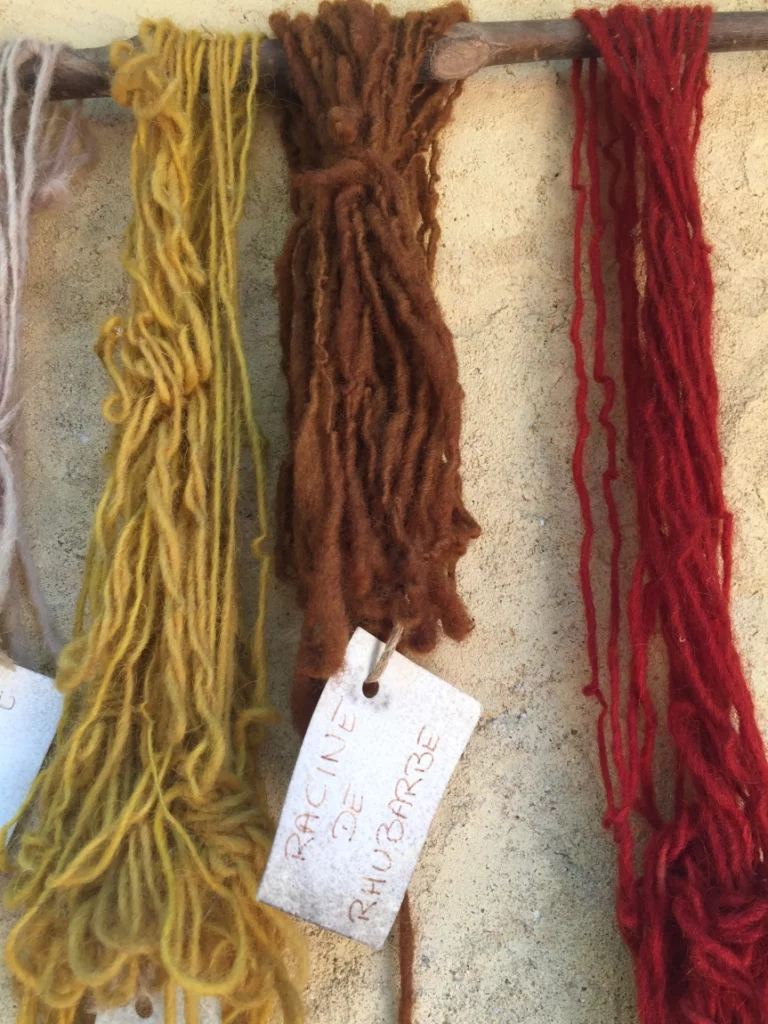
Preparation and dye bath
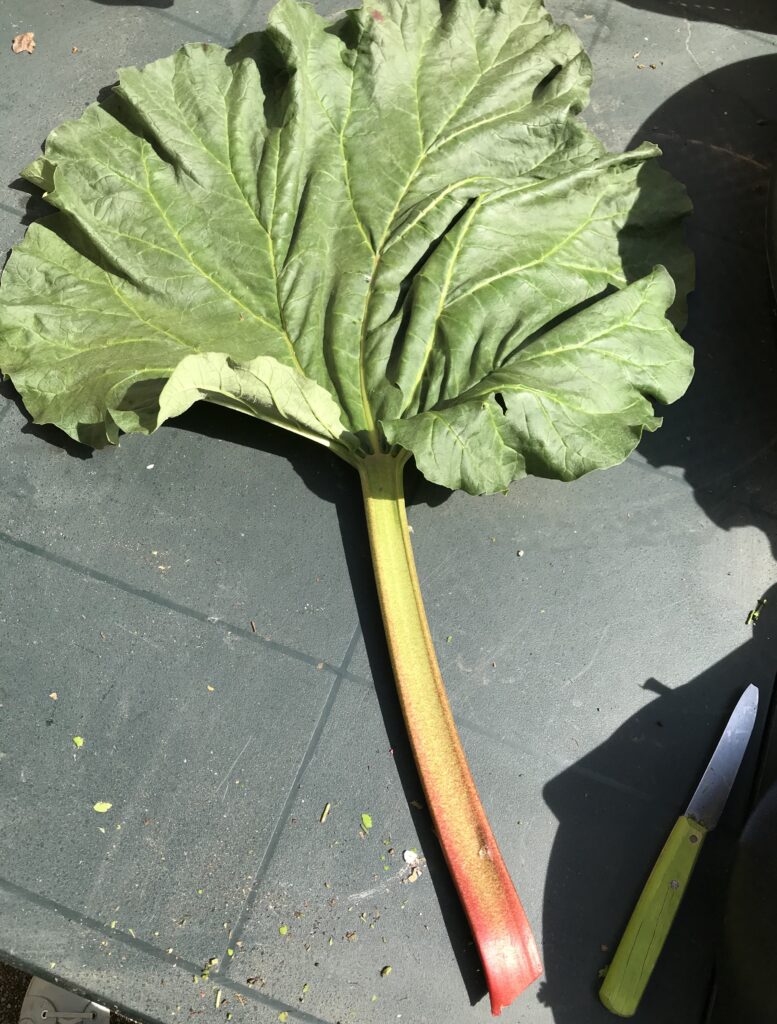
After harvesting the stalks for a delicious rhubarb pie, I cut the leaves and dried them for later use.

For immediate use, I think the proportion of 300g per 100g of wool is correct.
On the day chosen for my dyeing, I used 100g of dried leaves for 100g of wool. I covered with boiling water and let it simmer for 1 hour, with small “flopflops”. I filtered the juice through my “cheesecloth curtain” and let the bath cool.

Dyeing
After letting my mordanted skeins soak (see the article on my first try), I immersed them in the dye bath, diluted with a sufficient quantity of water to cover the wool. The bath is at 30-35°C. I gradually heated to 85-95°C, stirring slowly every 10 minutes or so. As soon as I dipped the wool, I saw a pretty yellow color appear.
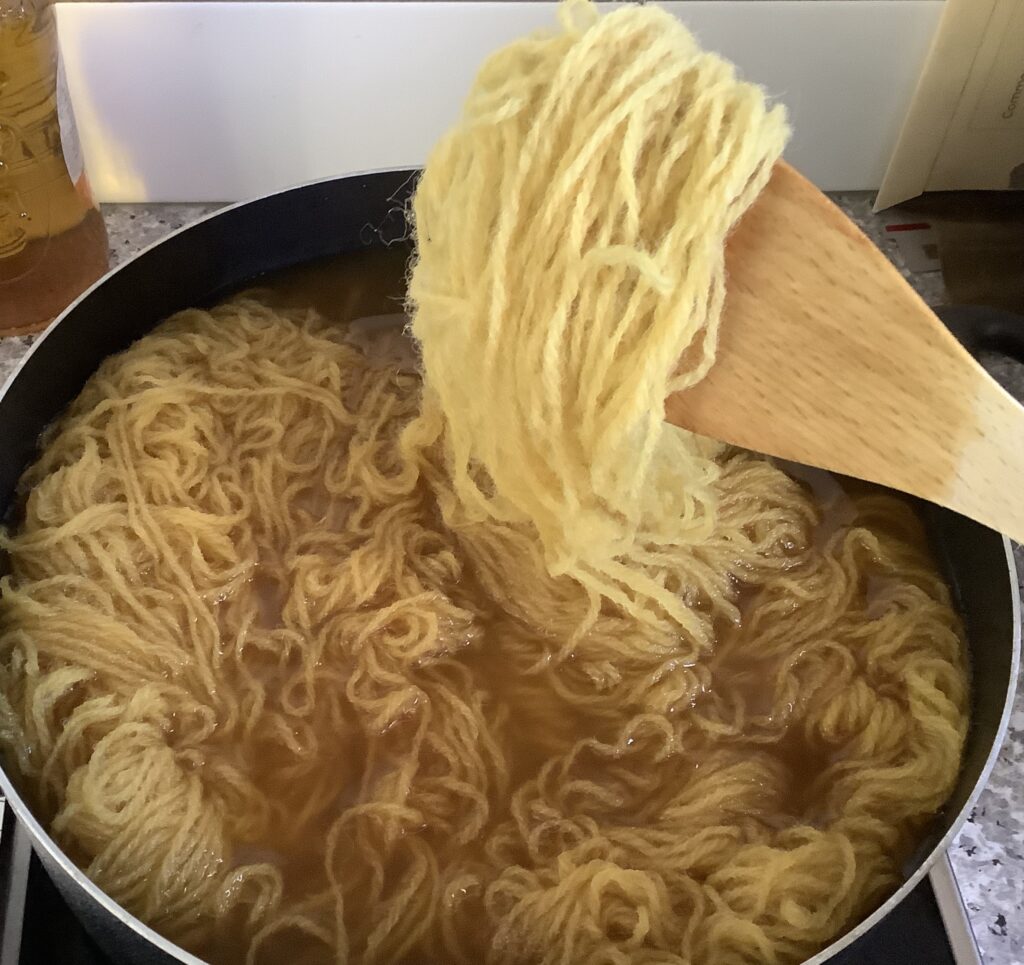
I simmered for 1 hour and allowed the skeins to cool to 30-35°C before rinsing them several times, checking the water temperature each time. I got a nice golden yellow.
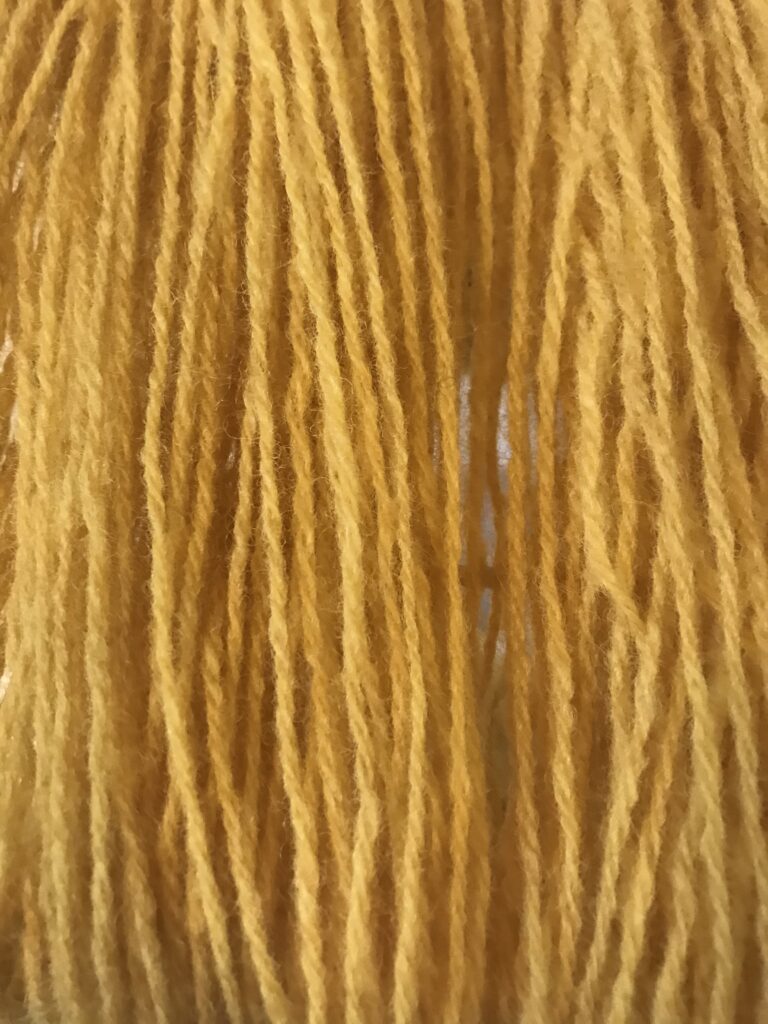
I read that it was possible to stop the dyeing before the end of the process by immersing the wool in a water bath at 85°C. This will be for a future test.
Post-etching with Iron Sulfate
6 g of iron sulfate to the warm dye bath and dipped a still wet skein and…. Wow! Khaki green!

Be careful to rinse the pan thoroughly after post-etching with an iron to remove all residue.
See you soon for a next vegetable dyeing experience
Kisses
CKL
